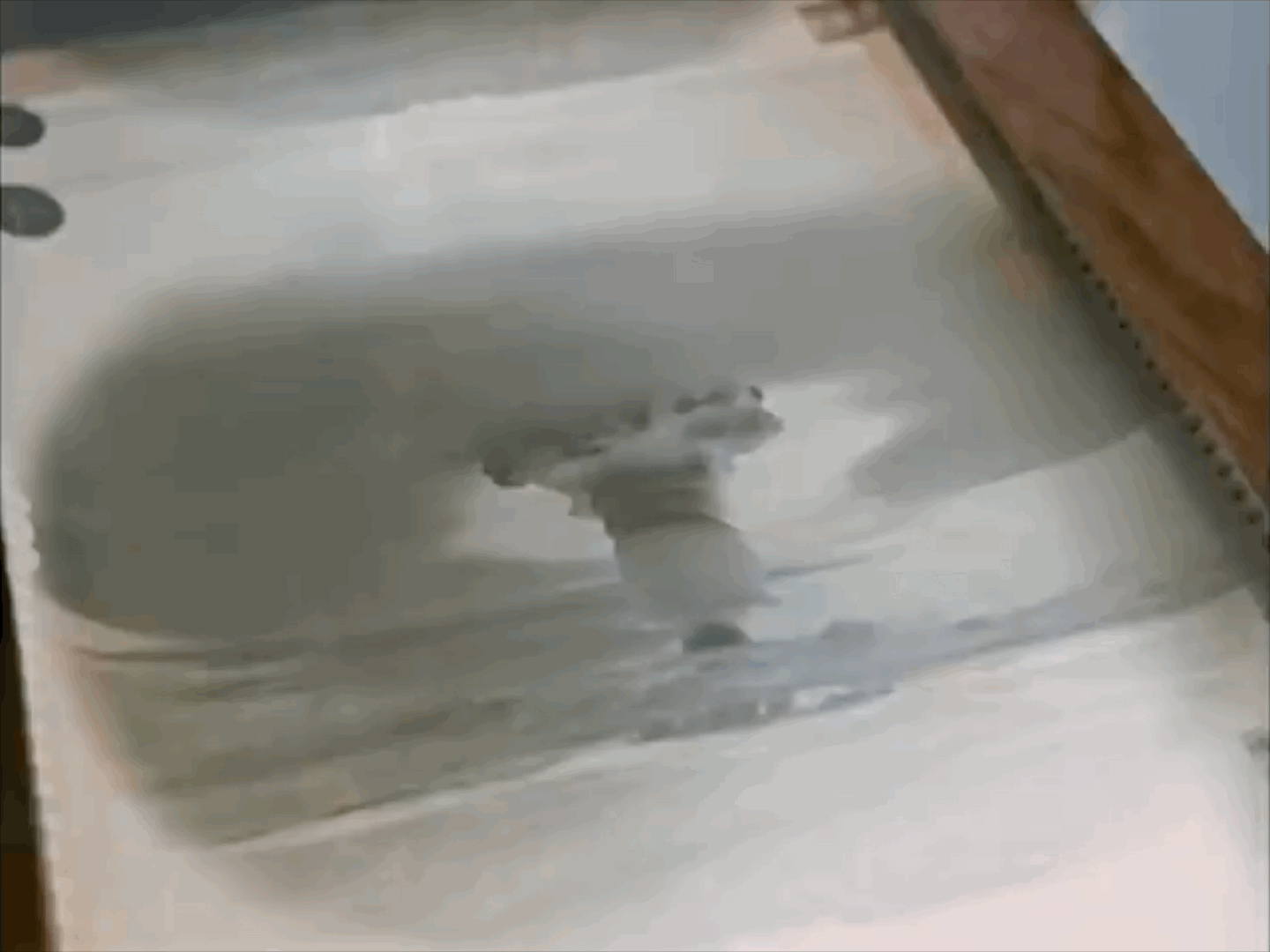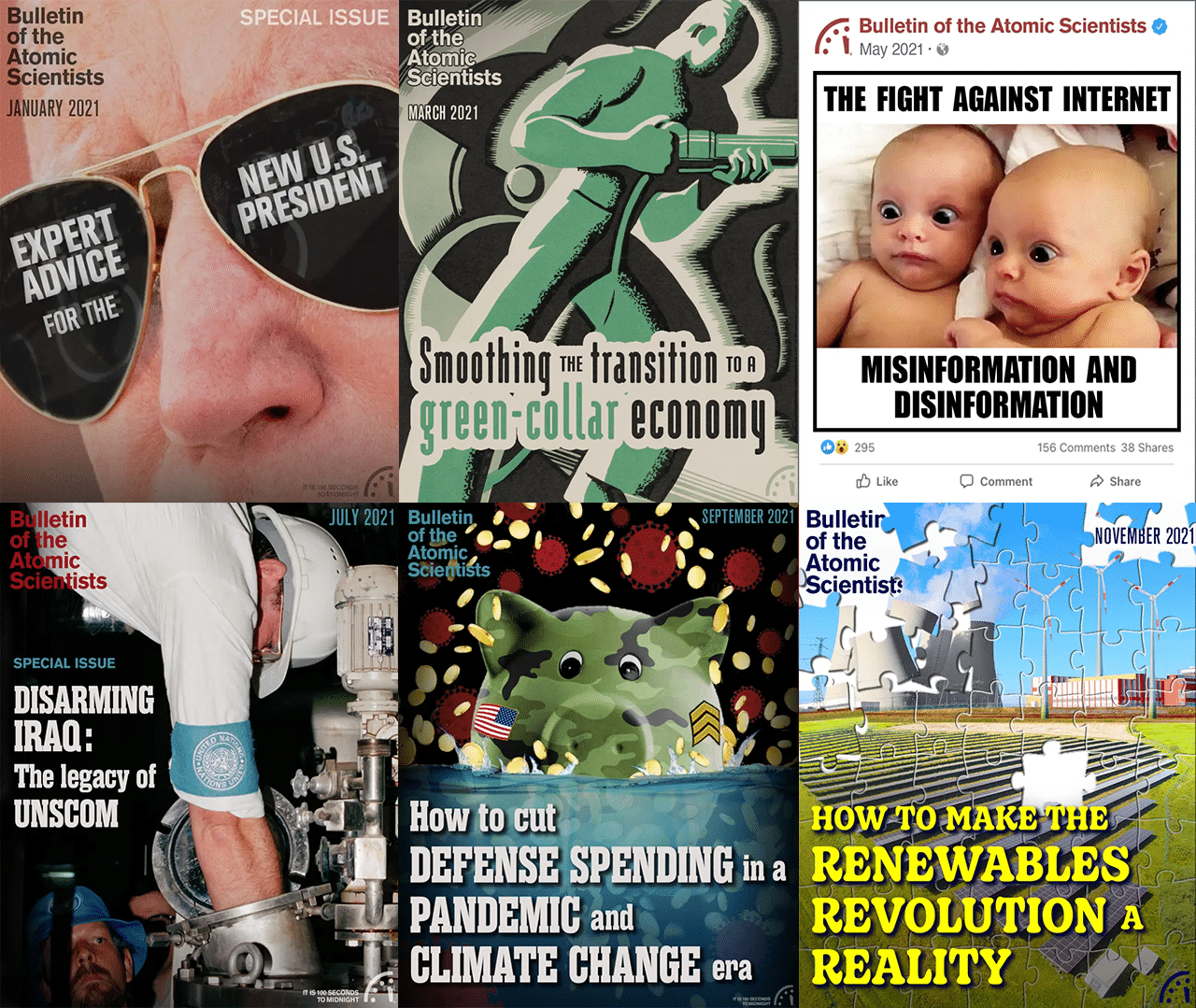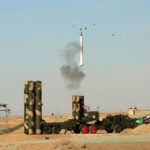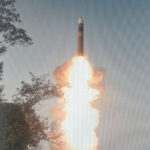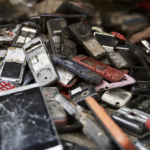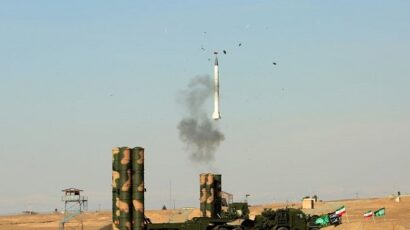A photograph of a giant nuclear jet airplane engine; a map of thousands of chemical sites in the path of rising seas and storms; a vanishing logo symbolizing recovery from nuclear catastrophe—these are some of the unexpected visuals that supplemented the written word on the Bulletin website this year. Here are more examples of how we took a literal look at existential threats in 2021:
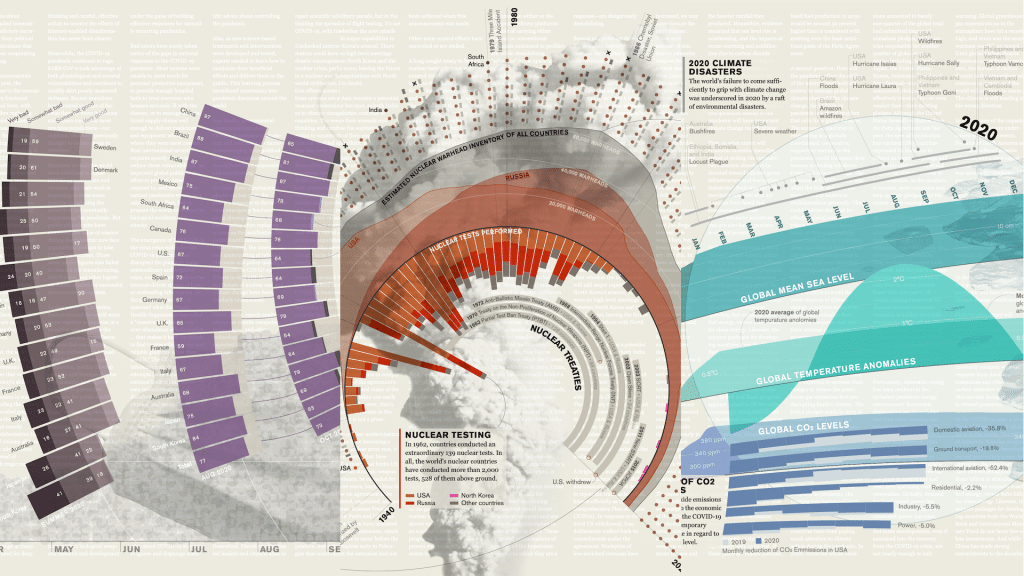
Doomsday datavisualizations
By Pentagram
Every year the Bulletin’s Doomsday Clock announcement draws the world’s attention, and 2021 was no different. As the White House changed occupants in January, the clock remained at 100 seconds to midnight, a reminder that even with less chaotic leadership the planet remains at risk for nuclear, climate, and other human-made disasters—not least the world’s continuing failure to tame the Covid-19 pandemic. This year, the firm behind the current design of the Doomsday Clock created three new designs that capture these existential risks in graphic form. These doomsdata-visualizations show at a glance the threats that have kept the hands of the clock moving forward since 2012.
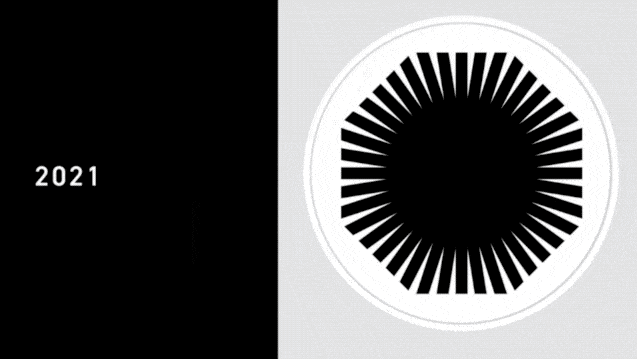
Rebranding Chernobyl
By Julian Hayda
Another graphic design effort was the focus of Julian Hayda’s look at recent efforts to rehabilitate Chernobyl. Since suffering the world’s worst nuclear accident in 1986, the power plant—along with the large radioactive exclusion zone around it—has become an unlikely tourist destination contaminated by crass gift-shop offerings memorializing the disaster, like glow-in-the-dark condoms. But a new partnership between the Ukrainian government and the Banda graphic design agency produced an unusual forward-looking representation of Chernobyl’s transformation: a logo that gradually disappears as the region’s ecosystem recovers.

This year the Bulletin presented fascinating in-depth investigations to our readers on topics like the gargantuan budget for seemingly unnecessary new nuclear weapons systems; the United States’ unrealized but still unbelievable plans to test nuclear devices 100,000 times more powerful than the Hiroshima bomb; and the dangerous vulnerability of Houston’s unending toxic landscape. The photos and graphics accompanying these riveting reports help make those hard-to-imagine excesses more concrete.
Why is America getting a new $100 billion nuclear weapon?
By Elisabeth Eaves
Contributing editor Elisabeth Eaves took a road trip across multiple Western states, from Montana to Utah, to get a closer look at the military installations and defense industry facilities that help sustain the US land-based nuclear deterrent—and find out exactly what (and who) is driving the Pentagon’s colossal budget for its first major intercontinental ballistic missile system upgrade in more than 30 years.
An unearthly spectacle: The untold story of the world’s biggest nuclear bomb
By Alex Wellerstein
The day before Halloween, 1961, the Soviet Union tested the most powerful nuclear weapon ever detonated, “Tsar Bomba.” Footage from above the clouds above ground zero reveals a fireball indistinguishable from the rising sun. The test was widely condemned as dangerous and destabilizing, particularly by the Kennedy administration. But decades later, historian Alex Wellerstein uncovered new documents detailing the US government’s own varying enthusiasm for building the biggest bomb possible. Reading formerly-classified reports combining bureaucratic banality with Dr. Strangelove-like zeal is fascinating and horrifying, as is putting eyes on footage and images of these bombs—both the devices themselves and their potential explosive impact.
Gathering storm: The industrial infrastructure catastrophe looming over America’s Gulf Coast
By Tristan Baurick
Global warming, which threatens to dramatically increase sea levels over the coming century, has already been conclusively linked to the increasing severity of storms and hurricanes in the southeastern United States. In this Bulletin exclusive, reporter Tristan Baurick worked with MIT’s Center for Global Change Science to analyze flood risk data from Texas and Louisiana that fills in gaps in the US government’s official flood projections, and connect that risk to thousands of sites where potentially hazardous chemicals are stored. Many of those facilities are highly vulnerable to flooding from storm surges and precipitation. Our interactive map identifies every chemical facility at risk in both states, details the toxic materials stored at each site, and demonstrates that the threat extends inland far from the Gulf Coast.

Photo essay: How do humans make sense of the bomb?
By Robert Del Tredici
Artist Robert Del Tredici presented a potent selection of his work in this photo essay looking across several decades of developments in nuclear science and weapons, from wide-angle close-ups of famous scientists to microscopic close-ups of fissile material. It’s strangely heartwarming and disarming to see portraits of wizened wartime wranglers of nuclear energy like Edward Teller juxtaposed with shots of children discovering atomic science for the first time.
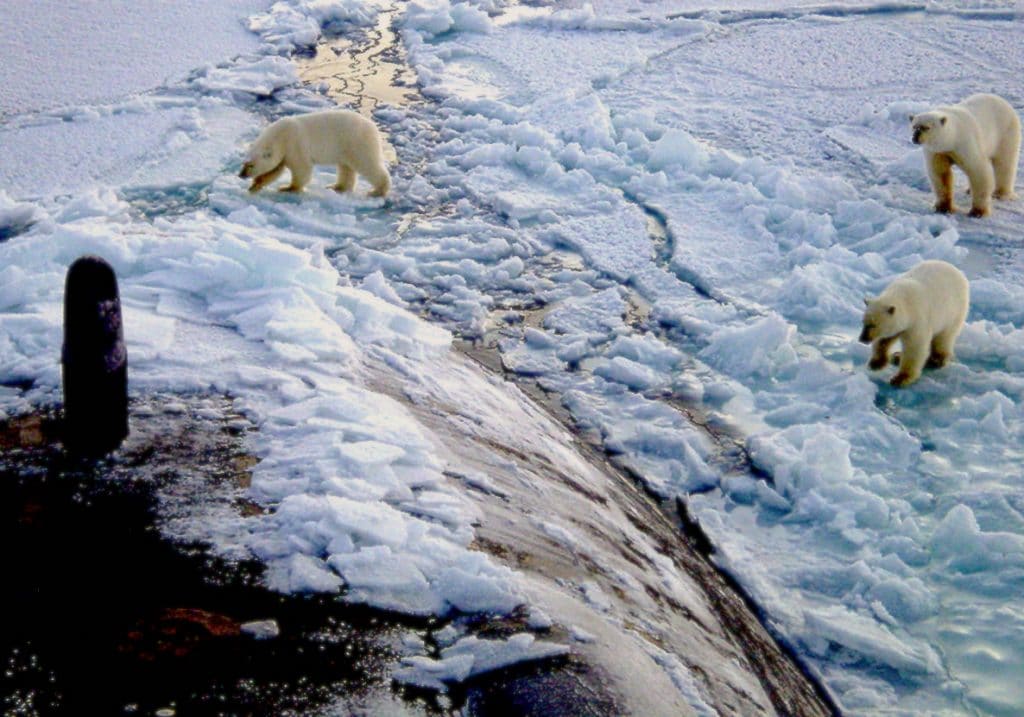
Strange animal-nuclear tales
By Susan D’Agostino
This year, fellow editor Susan D’Agostino unintentionally became this publication’s first in-house zoologist. She discovered surprising connections between the nuclear concerns familiar to our readers and less common Bulletin subjects like whales, jellyfish, snakes, and even bees. Those stories, and many others, all came together in this interactive world tour of unusual animal-nuclear encounters.
Circling back to end with the Doomsday Clock—it was one of the first images ever published by the Bulletin when it appeared on the cover in 1947. This year, the Bulletin’s covers continued to illustrate the themes of our bimonthly magazine, from Joe Biden’s election and the green-collar economy to defense spending during a pandemic and the fight against disinformation.
